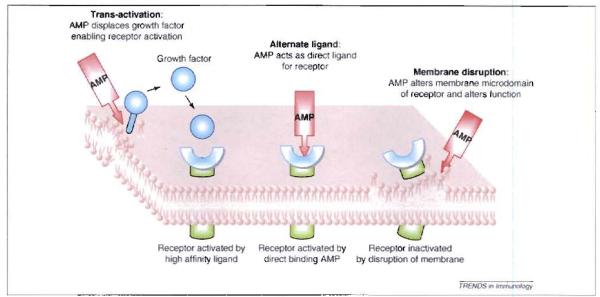Figure 3.
Alternative models for host activation by antimicrobial peptides. Three mechanisms have been proposed to explain how AMPs activate mammalian cells. Alternate ligand model; some AMPs, such as defensins and cathelicidin, might directly bind to a specific receptor, resulting in initiation of receptor signaling. This has been proposed for CCR6 and FPRL-1. Membrane disruption model in this model AMPs associate with and modify the membrane containing the receptor. This membrane activity indirectly results in a change in receptor function such that it can signal without a ligand or becomes insensitive to binding by its specific ligand. This has been proposed for inactivation of TLR4. Trans-activation model: AMPs stimulate the release of a membrane-bound growth factor, which then binds to its high affinity receptor and activates it. This has been proposed for HB-EGF (heparin binding epidermal growth factor) and the EGF receptor.

